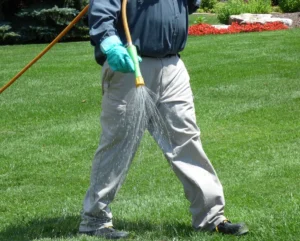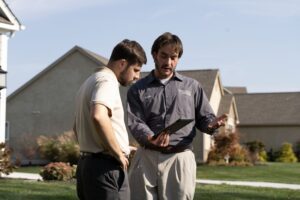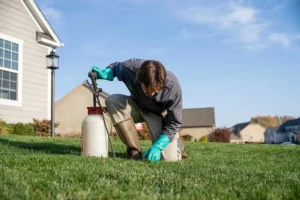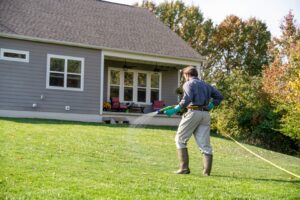Grub Damage to Lawns
Sometimes it’s hard to tell exactly what is happening in your lawn at this time. There are a lot of different elements that could have contributed to making your lawn look less than presentable. The most common problems that we see are grub, heat, or skunk damage in the lawns around this time. This time of the season is when the temperatures are more than likely at their highest, and grubs are at their most active season.
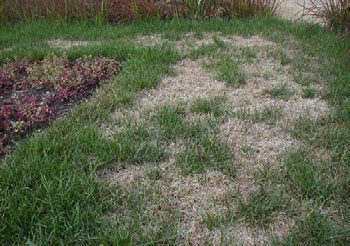
Grubs damage is easy to identify. If there are various brown patches in your yard around this time, try to tug on the brown grass slightly. If the brown grass is easily pulled up without any snapping noises for the roots, then you more than likely have grub damage. We do have a lawn care treatment to help aid in killing those pesky grubs.
Heat stress can also show up in brown patches. These patches will still have roots that are in the ground but are in desperate need of water. To prevent, mowing your lawn less often in those areas. If your lawn has a hill, the grass on the top is in need of water dispensed at a slower rate, so it has time to soak in. Water is the main need of your lawn, if it is in fact heat stress.
Skunks are a little trickier to prevent or rather ward off. These little guys love foraging for bugs of any kind and various vegetation that is within reach. They like to make several holes in the lawn where they are foraging for the food. Some ways to ward them off is to have a light motion sensor that will click on when a skunk is trying to scurry onto your lawn. They are nocturnal creatures and do not appreciate the abrupt burst of light.
You can also try spraying a mixture of castor oil and dish washing detergent, especially one with scent. Make sure to spray it before you go to bed or near the end of the day, because that is when the skunks will be the most active.

